Location: GUIs >
Xerox >
Three Rivers / ICL Perq
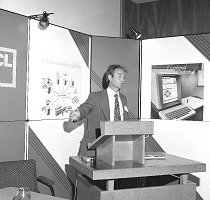
In July 1980 the Perq was publicly demonstrated at an annual conference
on computer graphics called SIGGRAPH.
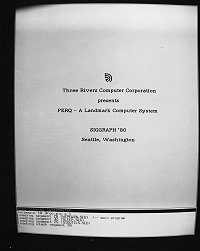
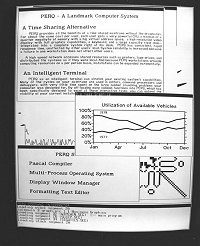
A number of graphical demonstrations were created while the Perq was
in development.. These included a simulated office automation environment
that used multiple windows, some rapid movements of information to demonstrate
the graphics power of the system, and the use of an editor and fonts..
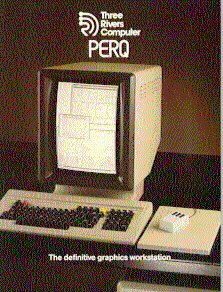 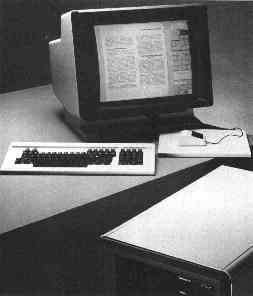
The original Perq was followed by the Perq 2. This enhanced version
included:
-
1 to 2 megabytes of RAM.
-
The option of either the portrait monitor or a landscape monitor that could
display a resolution of 1280*1024.
-
The option of a "Kriz" mouse or the Summagraphics tablet
-
A smaller 8" hard drive instead of the 17" hard drive. Later models used
5.25" hard drives.
Additionally the marketing focus changed to focus more on its use as a
scientific workstation.
The Perq and Unix:
There were several versions of Unix ported to the Perq. The first was
Accent Unix. Accent ran on the Perq using its native Q-code instruction
set and could run both Accent and POS applications.
Interesting Trivia: The Accent kernel was the predecessor to the Mach
kernel. The Mach kernel is probably most famous today as being the basis
for the kernel used in MacOS X.
The more popular version of Unix for the Perq was PNX. (another unfortunate
sounding name). It used a custom microcode instruction that was more conducive
to running applications compiled in C and as a result ran much faster than
Accent.
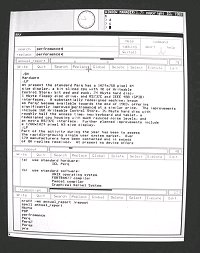
The PNX Windowing system, its editor "Spy", a clock application, and
its window manager. .
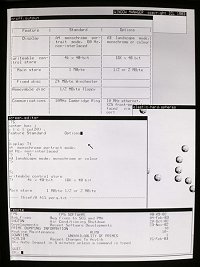
Several more applications running under PNX including a Sphere demo
and "nroff", a Unix type setter.
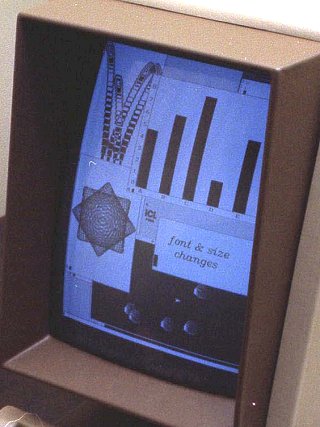
Another image of various demo applications running under PNX.
| 






